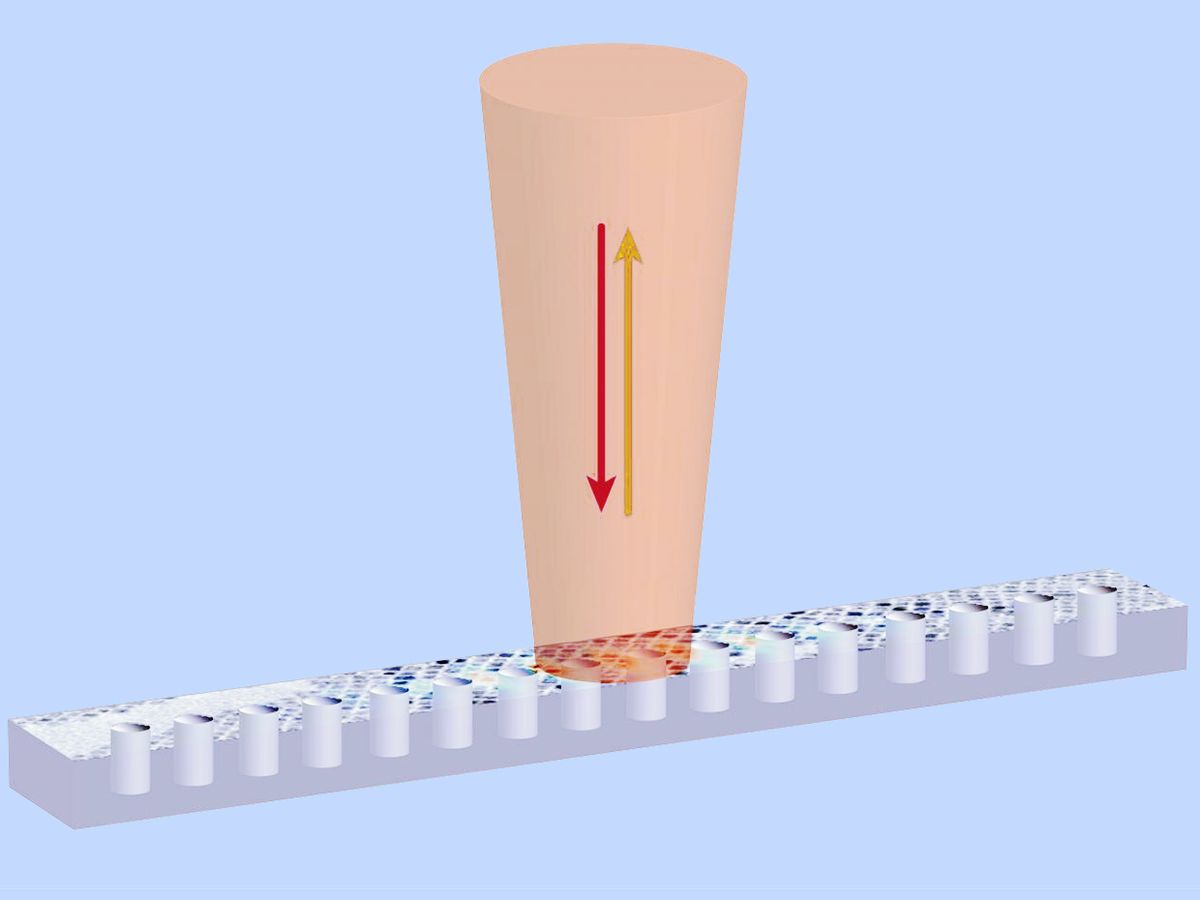An international research team from the University of Maryland and ETH Zurich in Switzerland has successfully demonstrated that a nanocrystal of perovskite can serve as a quantum emitter of light, and, when coupled with a nanophotonic cavity, can dramatically improve the efficiency of the light emission.
The resulting device and method, described in the journal Applied Physics Letters, could be used to build nanolasers and optical devices that exhibit much faster response times than currently possible.
Previously, there have been other quantum emitting materials that have been coupled to nanophotonic cavities. In this area, epitaxial materials such as quantum dots have garnered the most research interest.
However, the researchers believe there are some distinct advantages to using perovskite nanocrystals instead of epitaxial materials, which involve the fairly complex deposition of a crystalline layer on a crystalline substrate.
Instead of the epitaxial techniques, the perovskite nanocrystals are synthesized using inexpensive colloidal chemistry techniques. This also makes it possible for these crystals to be placed on a broad range of substrates using simpler solution-deposition techniques when they are coupled to various photonic structures.
The other main set of advantages for perovskites in light-emitting applications relates back to why they have become such a darling in photovoltaics: their optical and electrical properties.
“Perovskites exhibit a slow non-radiative decay rate and low densities of carrier-trapping defects, which contributes to their high photoluminescence efficiency at room temperature,” explained Zhili Yang, co-author of the research. “In addition, the emission spectrum could cover the whole visible range by controlling the size and material composition, especially for the blue-green wavelengths that are otherwise difficult to access.”
The device operates by exciting the coupled system using a UV laser. This excites the perovskites to a higher energy level. Within a nanosecond, the exciton (an excited electron-hole pair) will decay to its ground state while transforming its energy in the form of an emitting photon. The cavity introduces more decay channels to the emitting materials, so a majority of the photons are coupled into the cavity and form the standing mode of the cavity. Finally, the researchers are able to detect the photons leaking away from the cavity, which is the emission signal.
The problem that previous attempts have encountered in working with nanocrystal perovskites has been the material quality.
“We need emitters with good photostability, so it can hold the performance when coupling to the cavities, said Yang. “Our collaborators from ETH provided perovskites that make this coupling possible.”
In addition to nanolasers and faster optoelectronics, Yang believes the device they have made could increase the efficiency of existing perovskite emitting devices, such as LEDs, which could open up real-world applications in efficient illumination and displays.
Before these aspirations can be realized, Yang concedes that they will need to further improve the performance and stability of the material itself. Second, it would be better to excite the material electrically rather than optically for practical use.
Yang adds: “We are trying to realize similar devices spanning the whole visible range, and the next step could be finding ways to further improve and stabilize the performance and also utilizing electrical gates to excite the material in our devices.”
Dexter Johnson is a contributing editor at IEEE Spectrum, with a focus on nanotechnology.



